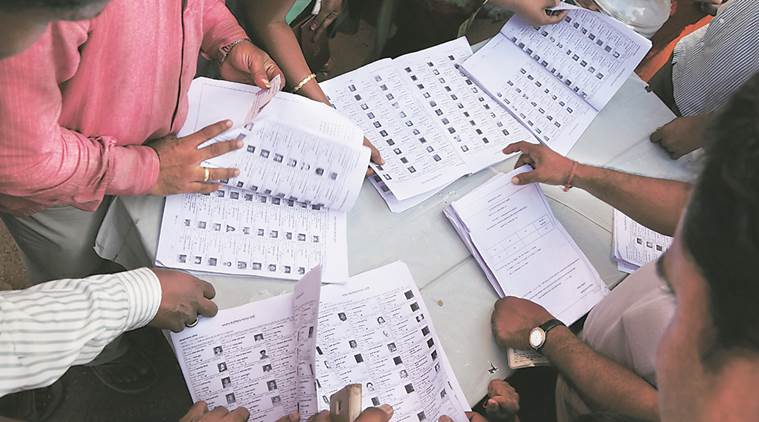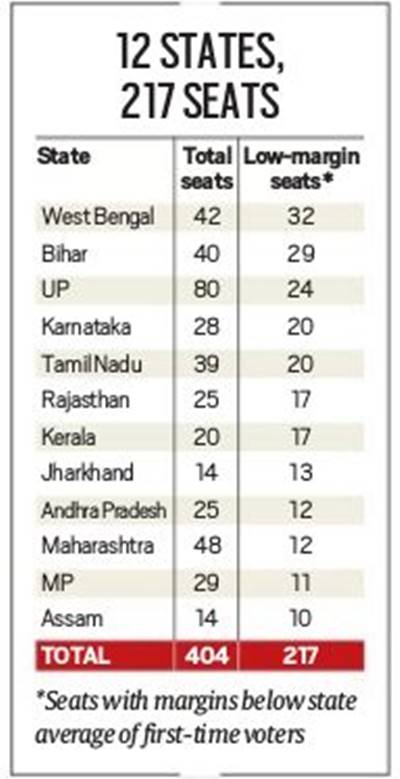
This Lok Sabha election, the youth may hold the key in as many as 282 seats across 29 states, where there could be more first-time voters than their respective winning margins in 2014, an analysis of Election Commission (EC) data by The Indian Express has revealed.
These voters — born between 1997 and 2001 — were not eligible to vote in the last general elections. In fact, there will be an estimated average of 1.49 lakh first-time eligible voters in each Lok Sabha constituency and this figure is larger than the winning margin in 297 seats in 2014. Some of these voters may have got an opportunity to vote during the Assembly elections since 2014, but this will be their first Lok Sabha election.
Post-Mandal, post-Babri: Over 8 crore new voters
The upcoming Lok Sabha elections will see an estimated 8.1 crore first-time voters born between 1997 and 2001. These voters did not participate in the 2014 elections as they were below 18. This is a demographic that has missed some of the defining forces that have shaped Indian politics. How will parties respond to the issues that touch this post-Babri, post-Mandal generation and their aspirations is a key question in 2019.
Given the import of regional dynamics in electoral contests, The Indian Express also compared the state average of first-time voters (18-22 years old) per Lok Sabha seat to the winning margin of seats in those states in 2014. In this case, the total number of Lok Sabha seats, where millennial voters are likely to have a significant bearing on the outcome, works out to 282 – more than the numerical majority required in the Lok Sabha.

The analysis is based on new voters who crossed the eligibility age of 18 years after the 2014 elections and were added during subsequent annual summary revisions of electoral rolls.
OPINION | The best way to vote
While the state-wise data of first-time eligible voters for the years 2016, 2017, 2018 and 2019 is accessed from the EC, for 2015, The Indian Express analysis considered the state average of new voters in the subsequent four years.
Of the 282 Lok Sabha seats, 217 are from 12 major states — West Bengal (32 seats), Bihar (29), UP (24), Karnataka (20), Tamil Nadu (20), Rajasthan (17), Kerala (17), Jharkhand (13), Andhra Pradesh (12), Maharashtra (12), MP (11) and Assam (10) are some of the major states where the state average of new voters since 2014 is more than the winning margins from the last general election.
READ | 2019 Lok Sabha elections will be held on time, says EC amid India-Pak tension
As for the electorally significant Uttar Pradesh, which has the highest number of seats, the average number of new eligible voters (over 1.15 lakh) falls short of the average winning margin (1.86 lakh) in the state’s Lok Sabha seats in 2014.
However, the SP and BSP had contested the 2014 election as rivals and in the wake of the newly announced alliance between the two parties, the newly eligible electorate could hold the key to the electoral outcome – and the figure of 282 Lok Sabha seats could even go up.
In all, there will be an estimated 8.1 crore first-time voters participating in the upcoming elections who did not get to vote in the 2014 Lok Sabha elections as they were below 18, the minimum age to be eligible to vote. They will be exercising their franchise for the first time as a majority government goes to polls seeking re-election.